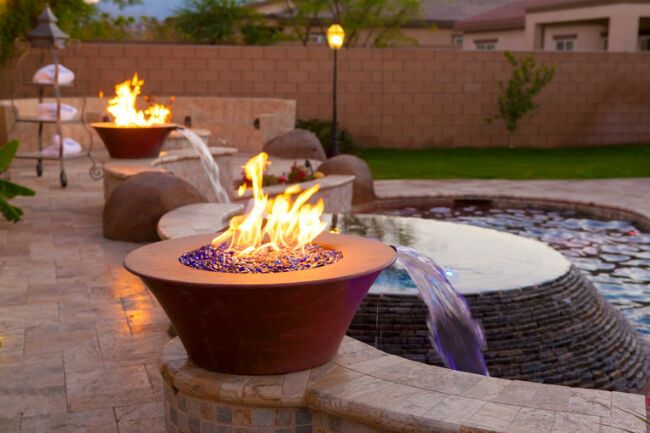Having a fire pit under a covered patio can seem like a great idea. It allows you to enjoy the ambiance of an outdoor fire even when it’s raining or snowing. However, there are some safety considerations to keep in mind before installing a fire pit under your patio cover.
Page Contents
Fire Code Requirements
Most jurisdictions have fire codes that restrict open flames under covered structures. These codes are in place to prevent fires from spreading quickly under overhead combustible materials like wood patio covers. Here are some common fire code rules regarding fire pits under patios:
- Fire pits cannot be located within 10 feet of the patio cover or any other combustible construction.
- The patio cover must be made entirely of non-combustible materials if a fire pit is installed underneath.
- There must be at least 7 feet of clearance between the flame height and the bottom of the patio cover.
- The fire pit must have an approved spark arrestor to prevent embers from exiting the fire area.
Always check with your local fire marshal before installing a fire pit underneath a covered patio. If your patio does not meet the fire code requirements, you may be prohibited from having a fire pit or be required to make modifications.
Fire Pit Placement
Even if the fire code allows it, you need to carefully consider where to place your fire pit under the patio cover. Here are some placement tips:
- Do not locate the fire pit near support posts or beams for the patio cover. The heat and flames can damage the structural integrity over time.
- Keep the fire pit towards the edge of the patio to maximize ventilation and smoke clearance.
- Have at least 15-20 feet clearance between the fire pit flames and any combustible materials like patio furniture, curtains or plants.
- Keep a fire extinguisher and water source nearby in case of emergencies.
It’s also crucial that the patio cover be constructed from non-combustible materials like metal, brick or stone. Avoid wood, plyboard and plastic which could ignite from ember exposure.
Ventilation
Good airflow and ventilation are essential for fire pit safety under a covered patio. Smoke and carbon monoxide must be able to dissipate and not linger under the roof. Here are some ventilation tips:
- The patio cover should have open sides and at least one permanent ventilation opening like a louvered gable vent.
- Avoid closing up the patio area with wall screens or roll-down plastic curtains which can trap smoke.
- Install ceiling fans under the patio cover to improve air circulation.
- Use a chiminea style fire pit with a taller smoke stack to promote airflow.
- Only burn clean, dry wood – not green wood, pressure treated lumber or debris.
Always monitor smoke conditions carefully. If smoke accumulates under the patio cover, put out the fire immediately until proper ventilation can be established.
Safety Tips
Here are some additional tips for safely operating a fire pit under a covered patio:
- Have a fire extinguisher and water source nearby in case the fire escapes control.
- Do not leave the fire unattended and supervise children and pets around the fire pit.
- Avoid burning during windy conditions when embers are more likely to spread.
- Keep the fire pit covered when not in use.
- Inspect the patio cover regularly for fire pit related damage.
- Check with your home insurance provider – some may prohibit or restrict fire pits under patio covers.
Permits
Most jurisdictions require permits for outdoor fire pits, especially under covered structures. The permit process ensures your installation meets all local fire codes and zoning restrictions. Failure to obtain required permits can jeopardize your homeowners insurance coverage and result in fines or citations.
Conclusion
Installing a fire pit under a covered patio can be safe with proper precautions but also involves considerable risks. It’s essential to check local fire codes, obtain permits, carefully plan the fire pit placement and design the patio cover to be non-combustible with ample ventilation. With attention to safety and regular maintenance, a fire pit can provide enjoyable ambiance to a covered patio. However it’s critical to always prioritize fire safety when combining an open flame with an overhead structure.
